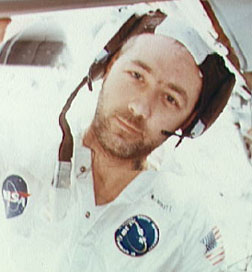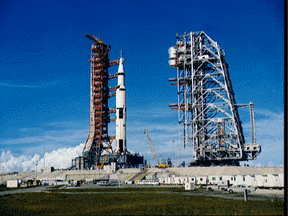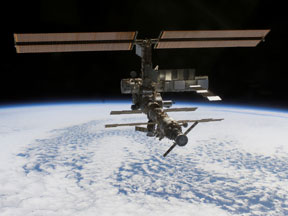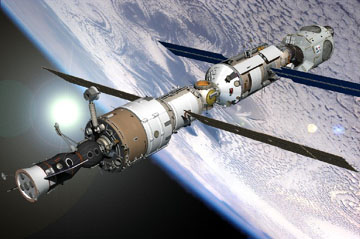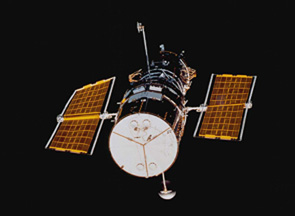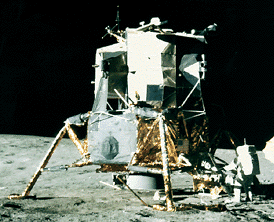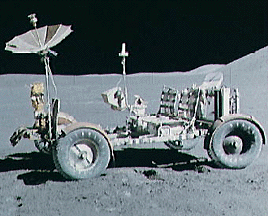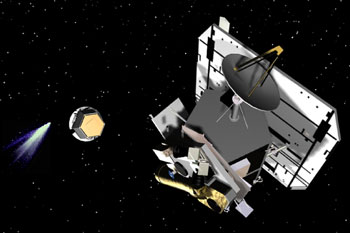Click on image for full size
Courtesy of NASA
Related links:
History of Human Spaceflight
There are two type of space missions. Some missions are done by spacecraft that are machines or robots. Other missions have people on the space ships. We call the missions with people onboard "human spaceflight" missions.
The first astronauts and cosmonauts (the Russian word for astronaut) were test pilots who were very familiar with flying in fast and dangerous planes! The first human being to travel into space was Yuri Gagarin (USSR, 1961), followed a month later by the US astronaut Alan Shepard.
Once we found out that humans could travel in space, a "space race" quickly developed between the United States and the Soviet Union. The United States main interest was to land on the moon. The Soviet Union was more interested in setting endurance records and doing scientific research.
Through a sequence of human and robot space mission programs, including Mercury, Gemini, and Apollo, the United States finally succeeded in landing the first people on the Moon in 1969 with Apollo 11!In 1973, the first American space laboratory was shot into orbit, and scientific experiments began to take place. Between 1973-1981, the United States scheduled only one or two human spaceflight missions.
Finally in 1981, the United States revamped their human spaceflight program with several new missions and brand new spacecraft design, the space shuttle. The space shuttle is a reusable craft.
In the meantime, the Soviets made several missions testing out new spacecraft and became the "first" to create a space station. In 1971, the cosmonauts spent several days aboard the first space station. The cosmonauts continued to spend time on several space station since then, breaking several endurance records in space. Laboratory experiments were conducted on all of these space stations, and the Soviets made great strides in expanding our knowledge of space, medicine, and engineering.
Now both countries participate in the International Space Station. It opened its doors to its first visitors in November 2000.


